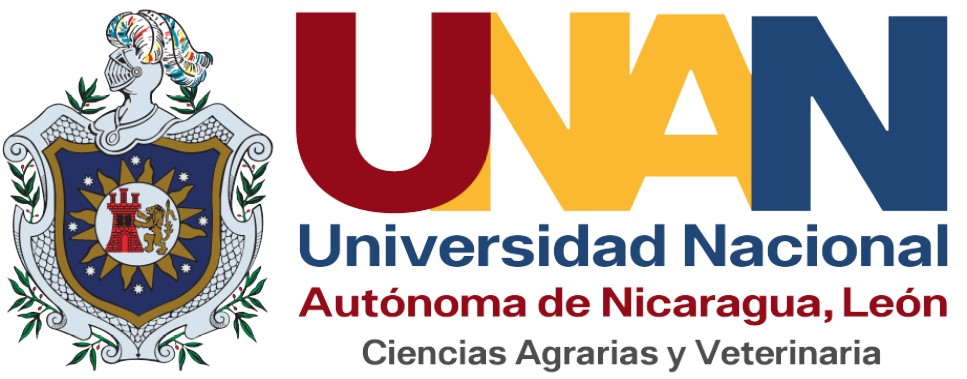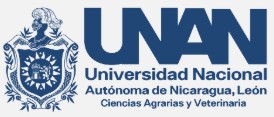Wheat flour Triticum aestivum, an alternative for nutritional sovereignty and adaptation to climate change, in the department of Jinotega-Nicaragua
DOI:
https://doi.org/10.5377/ribcc.v2i1.5705Keywords:
Trigo, Diversificación, Comodity financial, Climate change, Soberany, Food safe and nutritionalAbstract
The present essay, focused on making known the agronomic and economic importance
of the bread wheat category Triticum aestivum, as a strategy of Sovereignty, Security
Local Nutrition and Rural Development in three climatically different zones of the
Jinotega department, due to its high protein nutritional value 10.1%, carbohydrates 76.7% and fibers 47.55%, which contributes this item to the producing families of the world. So include it in the local government programs to reduce the extreme poverty of Nicaragua; and decrease economic imports of 36.1 million dollars that Nicaragua invests annually. On the other hand, incorporate bread wheat into production systems projects agriculture with an agro-ecological approach to achieve adaptability to impacts of climate change.
Downloads
Metrics
References
Altieri, M. A., & Toledo, V. (2011). La revolución agroecológica de América Latina1. Segui buscando en la Red de Bibliotecas Virtuales de CLACSO http://biblioteca. clacso. edu. ar, 163.
Cañarejo, P., & Adolfo, S. (2013). Evaluación de siete variedades de trigo (Triticum aestivum L.) con tres tipos de manejo nutricional, a 3220 msnm Olmedo Cayambe- 2012. Universidad Politécnica Salesiana. https://dspace.ups.edu.ec/handle/123456789/6052
Financiera rural (2010). Monografía del trigo grano. (en línea).México. Consultado el 10 may. 2013. Disponible en http://www.financierarural.gob.mx/informacionsectorrural/Documents/Monografias /Monograf%C3%ADa%20Trigo%20(dic%2010)%20vf.pdf.
Iglesias, D, et al 2012. Caracterización agronómica y económica del trigo Jupateco. Tesis para optar el título de ingeniero en agroecología tropical. Universidad Nacional Autónoma de Nicaragua, CUR Jinotega.
Joachim von Braun, M. S. Swaminathan y Mark W. Rosegran. (2003) IFPRI (Instituto internacional de investigación sobre políticas alimentarias)," ensayo Agricultura, seguridad alimentaria, nutrición y los objetivos del milenio". Ensayo reimpreso del informe anual 2 0 0 3 - 2 0 0 4.Pp 2-4.
Made- in -Argentina. (2010). Caracteristicas del cultivo de trigo. (en línea). Consultado el 10 de jul.2013. Disponible en http://www.made- inargentina.com/alimentos/granos%20y%20oleaginosas/temas%20relacionados/caracteristicas %20%20del%20 cultivo%20de%20trigo.htm.
MIFIC (Ministerio de Fomento Industria y Comercio). (2012). Informe Ejecutivo de Comercio Exterior Enero-Octubre (en línea). Managua, Nicaragua. Consultado el 16 nov.2013. Disponible en: http://www.mific.gob.ni/LinkClick.aspx?fileticket=AnMl0fEobf0%3D&tabid=772 &language=es-NI.
Miller, T. (2000). Estadios de Crecimiento del cultivo de Trigo. Texas, Estados Unidos. Consultado el 12 de sep.2013. Disponible en: http://www.ipni.net/publication/ialacs.nsf/0/5c1e5e74ae5d78aa8525799c0058 efb6/$file/estadiofeekes.pdf
Moreno. O. (2014). Siembra de trigo en surco para el valle de Mexicali, B.C. Mexico.
Platero, G. G. R., Cortés, A. M. R., Castillo, D. P., Hernández, L. H., & Ramírez, J. G. S. (2015). Bancos Comunitarios de Semillas Criollas. CATIE
Restrepo, J., Diego Ivan, S., y Prager, M. (2000). Agroecología. Editorial CEDAC. Republica Dominicana.pag.6.
Sánchez, E (2009). Soñadores del trigo. Recuperado en http://www.elnuevodiario.com.ni/especiales/47877-sonadores-siembra-trigo-harinero- nicaragua/. 2012/04/10.
Ugarteche, O. Segovia y D. (2010). El trigo otro commodity financiarizado. Mexico. Ed. UNAM, Mexico.pp1-10.
Villaseñor-Espín, Ó. M., Huerta-Espino, J., Leyva Mir, S. G., Villaseñor-Mir, H. E., Singh, R. P., Sandoval-Islas, J. S., & Espitia-Rangel, E. (2009). Genética de la resistencia a roya amarilla en plantas adultas de trigo harinero. Revista fitotecnia mexicana, 32(3), 217-223.
https://doi.org/10.35196/rfm.2009.3.217-223
Watson, O. (2012). En línea Cambio climático. Recuperado en http://cambioclimaticoglobal.com/que-es-el-cambio-climatico.
Zúñiga, Javier, R. (2007). Trigo blanco valor nutricional y potencial. Revista INIA tierra. N 74
Downloads
Published
How to Cite
License
Copyright (c) 2018 Revista Iberoamericana de Bioeconomía y Cambio Climático

This work is licensed under a Creative Commons Attribution-NonCommercial-ShareAlike 4.0 International License.
Copyright © 2025 Rev. iberoam. bioecon. climate change. National Autonomous University of Nicaragua León (UNAN-León), Knowledge Area of Agrarian and Veterinary Sciences / Specific Area of Agroecology and Agribusiness / Center for Research in Agrarian Sciencies. Academic Directorate. Research Department. Publication and scientific events Unit.












 EDITORIAL
EDITORIAL e-ISSN
e-ISSN


 COPYRIGHT
COPYRIGHT This work is licensed under a Licencia Internacional
This work is licensed under a Licencia Internacional 












